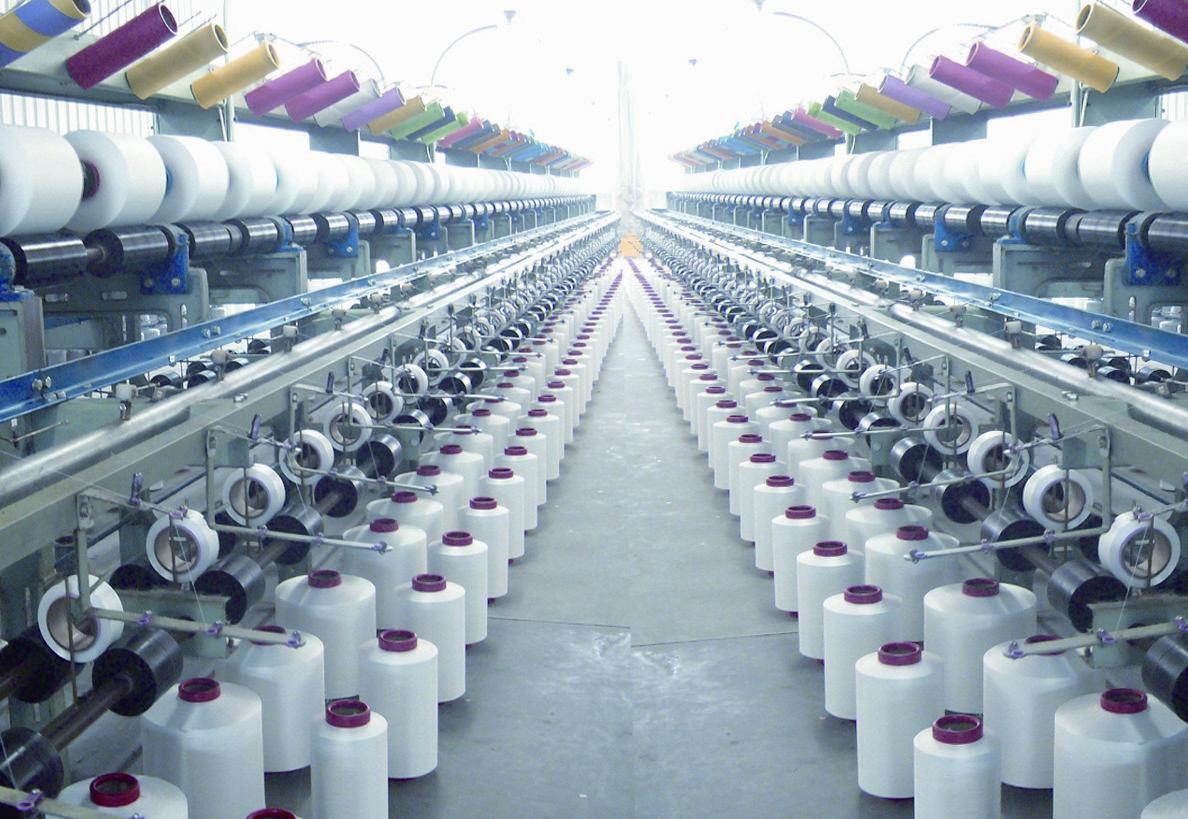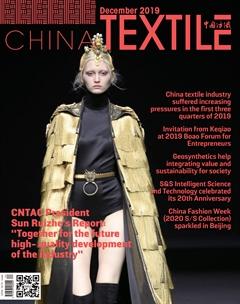The economic operation pressure of the textile industry increased in the first three quarters of 2019

Since 2019, the domestic and international development environment of Chinas textile industry has become more severe. The slowdown in market demand and the risk of trade environment have been intertwined, and the challenges and difficulties have increased significantly. The textile industry insisted on deepening the structural reform of the supply side and continued to accelerate the transformation and upgrading. Under the pressure of increasing production and operation pressure, the resilience against the downward risk pressure continued to emerge, and the prosperity remained in the expansion range. The economic operation situation is basically consistent with the external situation.
Industry prosperity continues to expand, production achieves low growth
Since 2019, the textile industrys prosperity has continued to expand. According to the survey data of the China National Textile and Apparel Council, the textile industrys prosperity index in the third quarter was 51.9, and it continued to maintain a range of expansion above 50, a slight decrease of 0.1 points from the second quarter.
The textile industry started in a normal way, and production has maintained steady growth at a low speed. According to the National Bureau of Statistics, in the first three quarters of 2019, the capacity utilization rate of the textile industry (including spinning, weaving, dyeing and finishing, home textiles, industrial textiles, etc.) was 78%, slowing by 2.6 percentage points from the same period of the previous year; the capacity utilization rate of the chemical fiber industry was 83.1%, which was 1.1 percentage points higher than the same period of the previous year. The utilization rate of the textile industry and chemical fiber industry was higher than the 76.2% capacity utilization level of the national industry in the same period. The industrial added value of enterprises above designated size in the textile industry increased by 2.9% year-on-year, and the growth rate was the same as that of the same period of the previous year, which was 0.7 percentage points slower than the first half of this year. In all links of the industrial chain, the production growth of chemical fiber and industrial textile industry was more stable. The industrial added value of the first three quarters increased by 12.3% and 7.4% respectively, which was higher than the growth rate of the added value of the whole industry by 9.4 and 4.5 percentage points respectively.
The pressure on the internal and external markets has not diminished, and the online retail channel has grown well.
Since 2019, Chinas textile and apparel domestic market has grown steadily and slowly, and online retail sales continue to maintain doubledigit growth. According to the National Bureau of Statistics, in the first three quarters, the retail sales of clothing, shoes, hats and needles and textiles above designated size increased by 3.3% year-on-year, and the growth rate slowed by 5.6 percentage points from the same period of the previous year, but accelerated by 0.3 percentage points from the first half of this year. It showed a sustained and slightly warming trend; the national online retail sales of online goods increased by 18.6% yearon-year, and the growth rate slowed by 4.7 and 2.8 percentage points respectively compared with the same period of the previous year and the first half of this year.
The export pressure of the textile industry continues to increase. According to customs data, in the first three quarters, Chinas textile and apparel exports totaled USD 208.62 billion, down 2.3% year-on-year. The growth rate slowed by 7 and 0.3 percentage points respectively compared with the same period of the previous year and the first half of this year. Among them, textile exports amounted to USD 94.3 billion, a year-on-year increase of 0.4%; clothing exports amounted to USD 114.31 billion, a year-on-year decrease of 4.5%. Although Sino-US trade friction has not yet had an overall impact on the economic operation of the whole industry, the impact of the U.S. tariff increase measures on exports has gradually emerged. In the first three quarters, Chinas exports of textiles and clothing to the United States decreased by 3.3% year-on-year; since the import tariff of clothing, home textile and other bulk products exported to the United States has been increased by 15% since September 1, the export of Chinas textile industry to the United States fell by 18.8% in that month.
The pressure for efficiency growth has increased and the scale of investment has declined.
Since 2019, the profit pressure of the textile industry has increased, but the benefits of some links in the industrial chain are good. In the first three quarters, the countrys 34,000 textile enterprises above designated size achieved operating income of 3,715.26 billion yuan, a year-on-year increase of 1.5%. The growth rate slowed down by 2.7 percentage points from the same period of the previous year; the total profit reached 156.15 billion yuan, a year-on-year decrease of 7.6%, a growth rate lower than 14.7 percentage points over the same period of last year; the operating income profit rate was 4.2%, which was 0.4 percentage points lower than the same period of the previous year. In each subsector, the total profit of filament, dyeing and printing and knitting industry increased by 7.9%, 4.7% and 3.7% respectively, which was higher than the growth rate of the whole industry by 15.5, 12.3 and 11.3 percentage points respectively; clothing, industrial textiles and textile machinery industry were stable at a high level, 5.2%, 5.0% and 6.8% respectively, which were basically equivalent to the same period of last year.
The scale of investment in fixed assets in the textile industry has been reduced, and the regional layout has been continuously adjusted. In the first three quarters, the completion of fixed asset investment in the in- dustry decreased by 7% year-on-year, and the growth rate was 12.8 and 5.7 percentage points lower than the same period of the previous year and the first half of this year. In terms of industries, the investment in the textile, clothing and chemical fiber industries decreased by 8.2%, 2% and 15.4% respectively. In terms of regions, Fujian Province, Hubei Province, Hunan Province, and Chongqing City all showed a good momentum of positive investment in the whole industry chain, and it was a regional highlight under the relatively low investment confidence of the whole industry.
Uncertainty in the future will continue, and high-quality development tasks are urgent
In the fourth quarter of 2019 and in 2020, the complexity and uncertainty of the development environment of Chinas textile industry will continue. It is an inevitable and urgent development task for the textile industry to continuously improve its own development resilience and tap the market potential of domestic demand. At present, the Chinese government has stepped up efforts to stabilize employment, stabilize finance, stabilize foreign trade, stabilize foreign investment, stabilize investment, stabilize expectations, increasing counter-cyclical control, and implementing a series of policy initiatives such as tax cuts and fees reduction, continuous improvement of the business environment, the fundamental support of the overall macroeconomic stability and the strong domestic market are the primary driving force and key to the future development of the textile industry. The textile industry will continue to fully implement the spirit of the 19th Party Congress, accelerate the promotion of high-quality development, strengthen domestic demand to tap potential, foster effective investment and consumer demand, promote industry supply structure adjustment and kinetic energy renewal, further stabilize the competitiveness of the international market, and strengthen the defense against the downward trend. The basis of risk and pressure ensures that the economic operation situation is generally stable, and it should make due contributions to ensuring the smooth operation of the national economy and the establishment of a well-off society in 2020.
(Contributed by China National Textile and Apparel Council Industrial Economics Research Institute)

